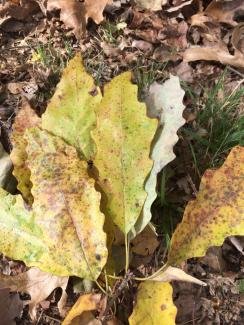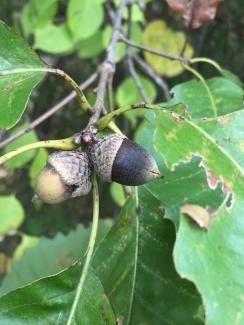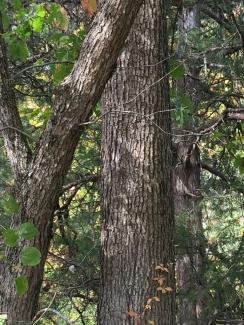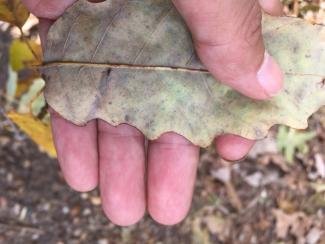Common Name
Chinquapin oak
Chinkapin oak
Yellow oak
Plant Form
Large Trees
Medium Trees
Duration
Perennial
Max Height (ft)
60.0
Width (ft)
50.0 -
70.0
Growth Rate
Medium
Region
Piedmont
Mountain
Hardiness Zone
5,
6,
7

Additional Info
Habitat: rich, moist woods; well drained soils of on uplands sites, limestone outcrops, dry bluffs, slopes. Chinkapin oak is a member of the white oak group with chestnut-type leaves. Unlike most white oaks, it is tolerant of alkaline soil and needs a pH >7.
Wildlife value: Supports a wide variety of Lepidopteran (butterflies and moths). Acorns are produced annually and birds and mammals are attracted to them. Can be eaten by people after tannins are leached or boiled out. Plant NOVA Natives lists this species as particularly popular with the non-native honeybees
Notes: A medium-sized, long lived oak that tolerates drought. Would make a good lawn tree, with a beautiful rounded crown. A long taproot makes it difficult to transplant
Flower Color
Gold/Yellow
Flower Prominence
Reduced
Bloom Time
Spring
Fall Color
Burgandy/Red
Gold/Yellow
Green
Light Requirements
Full sun
Moisture Requirements
Moist
Soil Texture
Clay
Loamy
Sandy
Shallow rocky
Good Choice for Public Spaces
Yes
Deer Resitant
Yes
Seed or Fruit eaten by wildlife?
Yes
Pollinators
Bees
Butterfiles
Top 30 for Butterfly and Moth Caterpillars?
Yes
Number of Lepidotera Species Genus Supports
534
Tolerates



